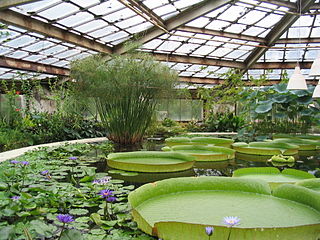
A greenhouse is a structure that allows people to regulate climatic conditions, such as temperature and humidity. There are many different designs of greenhouses; however, in general these buildings include large areas of transparent material to capture the light and heat of the sun. The three most common transparent materials used in the roof and walls of modern greenhouses are rigid plastics made of polycarbonate, plastic films made of polyethylene or glass panes. When the interior of a greenhouse is exposed to sunlight, the internal temperature rises and shelters the plants from cold weather.
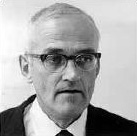
Clair Cameron Patterson was an American geochemist. Born in Mitchellville, Iowa, Patterson graduated from Grinnell College. He later received his Ph.D. from the University of Chicago and spent his entire professional career at the California Institute of Technology (Caltech).
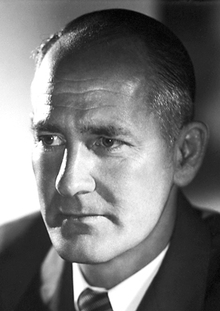
George Wells Beadle was an American geneticist. In 1958 he shared one-half of the Nobel Prize in Physiology or Medicine with Edward Tatum for their discovery of the role of genes in regulating biochemical events within cells. He also served as the 7th President of the University of Chicago.

Floriculture is the study of the efficient production of the plants that produce showy, colorful flowers and foliage for human enjoyment and the human environment. It is a commercially successful branch of horticulture and agriculture found throughout the world. Efficient production practices have been developed over the years, for the hundreds of plant taxa used in the floral industry, increasing the overall knowledge of whole plant biology. Plant breeding and selection have produced tens of thousands of new genotypes for human use.Jasmine, Marigold ,Chrysanthemum, Rose, Orchid, Anthurium etc. are flowers of commercial demand.

Aeroponics is the process of cultivating plants in an air or mist environment, eliminating the need for soil or an aggregate medium. The term "aeroponic" originates from the Greek words aer ("air") and ponos ("work"). It falls under the category of hydroponics, as water is employed in aeroponics to deliver nutrients to the plants.

The Climatron is a greenhouse enclosed in a geodesic dome that is part of the Missouri Botanical Garden in St. Louis. Initiated by then Garden director Frits W. Went, the dome is the world's first completely air-conditioned greenhouse and the first geodesic dome to be enclosed in rigid Plexiglass (Perspex) panels. Completed in 1960, it was designed by T. C. Howard, of Synergetics, Inc., Raleigh, North Carolina. The broad climatic range within the dome, which recreates a lowland rain forest, is achieved by sophisticated climate controls without using interior partitions.

Environmental technology (envirotech) or green technology (greentech), also known as clean technology (cleantech), is the application of one or more of environmental science, green chemistry, environmental monitoring and electronic devices to monitor, model and conserve the natural environment and resources, and to curb the negative impacts of human involvement.
Controlledecological life-support systems are a self-supporting life support system for space stations and colonies typically through controlled closed ecological systems, such as the BioHome, BIOS-3, Biosphere 2, Mars Desert Research Station, and Yuegong-1.
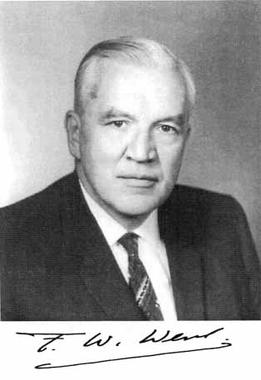
Frits Warmolt Went was a Dutch biologist whose 1928 experiment demonstrated the existence of auxin in plants.
Arie Jan Haagen-Smit was a Dutch chemist. He is best known for linking the smog in Southern California to automobiles and is therefore known by many as the "father" of air pollution control. After serving as an original board member of the Motor Vehicle Pollution Control Board, formed in 1960 to combat the smog, Dr. Haagen-Smit became the California Air Resources Board's first chairman in 1968. Shortly before his death in Pasadena, California of lung cancer, the Air Resources Board's El Monte Laboratory was named after him.
Arthur W. Galston was an American plant physiologist and bioethicist. As a plant biologist, Galston studied plant hormones and the effects of light on plant development, particularly phototropism. He identified riboflavin and other flavins as the photoreceptors for phototropism, the bending of plants toward light, challenging the prevailing view that carotenoids were responsible.

A mesocosm is any outdoor experimental system that examines the natural environment under controlled conditions. In this way mesocosm studies provide a link between field surveys and highly controlled laboratory experiments.
James Frederick Bonner was an American molecular biologist, a member of the National Academy of Sciences, notable for discoveries in plant biochemistry. Bonner invented a better way to collect natural rubber from trees. As result of his invention Malaysia nearly doubled its production of natural rubber. Bonner was instrumental in the invention of a method of mechanical harvesting of oranges. One of his most notable discoveries was finding how histones control gene activity. Bonner was professor and professor emeritus of biology at the California Institute of Technology.

Carbon-neutral fuel is fuel which produces no net-greenhouse gas emissions or carbon footprint. In practice, this usually means fuels that are made using carbon dioxide (CO2) as a feedstock. Proposed carbon-neutral fuels can broadly be grouped into synthetic fuels, which are made by chemically hydrogenating carbon dioxide, and biofuels, which are produced using natural CO2-consuming processes like photosynthesis.
Victoria J. Orphan is a geobiologist at the California Institute of Technology who studies the interactions between marine microorganisms and their environment. As of 2020, she is the Chair for the Center of Environmental Microbial Interactions.
The Eggatron was a digital counter that recorded when an egg was laid in an effort to determine the most productive hens. The device was tested using battery cages at CSIRO's Poultry Research Centre at Werribee.
The Biotron is a research facility located at the University of Wisconsin-Madison that "provides controlled environments and climate-controlled greenhouses to support plant, animal, and materials research for university, non-profit, and commercial clients."
The Algatron was a proposed and prototyped waste filtration and recycling system to be implemented on NASA missions. Designed and built by a pair of sanitary engineers at the University of California, Berkeley, William J. Oswald and Clarence Golueke, the Algatron relied on algae to provide carbon Dioxide absorption and oxygen generation as well as "microbiological waste conversion" for "humans sealed within an isolated capsule.". A working model was built by Oswald and Golueke in 1965 or 1966 under a contract by from the Air Force Cambridge Research Laboratories. Composed of two stacked cylinders lined with Algae, the cylinders would spin in opposite directions. With ports to allow sunlight in, nutrients were introduced via some overflow mechanism. Despite the promise that the Algatron represented, and the ways in which Oswald and Golueke "understood that the closed environment of the space capsule was itself just the a microcosm of the closed system of the earth's biosphere," the technology would never get past the prototype stage. NASA instead decided to go with fecal bags to deal with waste. The Russians developed a similar system, the BIOS-3, which got as far enough as a successful test run with human occupants in 1965.
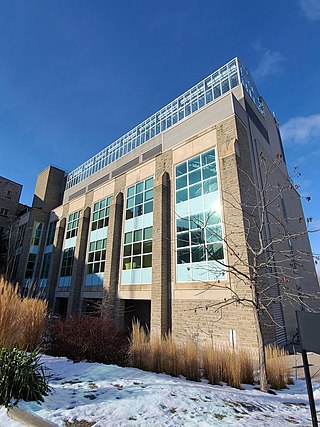
The Biotron Institute for Experimental Climate Change Research at Western University in London, Ontario is a facility constructed to simulate ecosystems and funded by the Canadian government to study how plants, microbes and insects sense and adjust to climate change. Its biome chambers allow control of temperature, humidity and sunlight so that scientists can simulate climatic zones from rainforests to Arctic tundra. This enables the study environmental science, biotech, materials and biomaterials in realistic environmental conditions while still in a controlled laboratory setting. The Biotron also trains students, including one of Western's winners of The Undergraduate Awards' Global Award.













